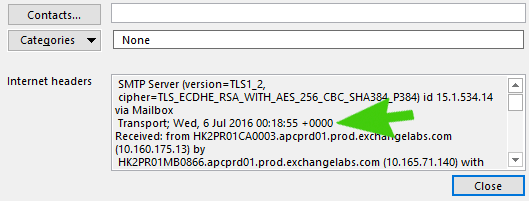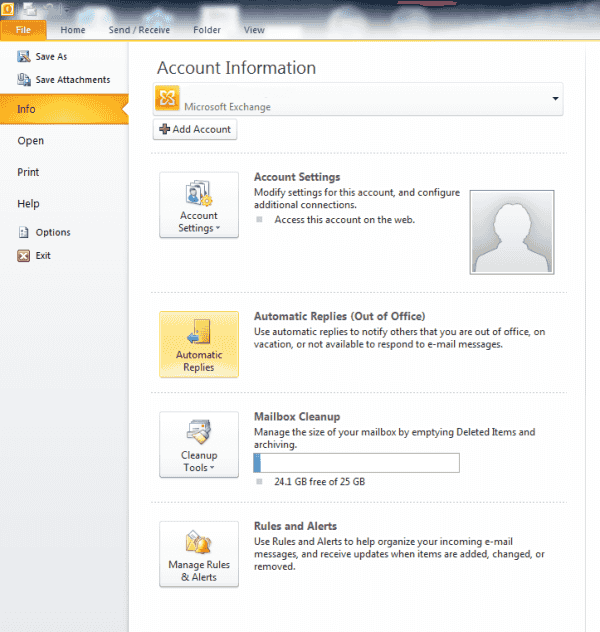

When you enable the automatic reply only for people in your Contacts folder, verify that your Contacts folder indeed doesn’t contain any addresses of people you don’t want to send an automatic reply to.

There is a built-in option to only send the external reply to (external) people who are also in your Contacts folder or to everyone who sends you a message. Internal and External Automatic Reply optionsĪll currently supported versions of Outlook and Exchange have the option to configure the Automatic Reply feature to only reply to internal users or set different replies for internal and external users. Note: If you are not using an Exchange account, you can use the guide "Out of Office Assistant / Automatic Replies / Vacation Responder" for alternative ways to set an Automatic Reply. You can also enable the Automatic Replies feature for internal users and only send external Automatic Replies to a select amount of contacts via an additional rule.Īn alternative approach would be to completely emulate the Automatic Replies feature by using a rule so you can be fully in control of who gets your reply and who doesn’t. You cannot directly set this level of exception for the Automatic Replies feature (also known as the Out of Office Assistant or OOF) in Outlook but there are a few methods available to still closely achieve this.įor instance, you can configure the Automatic Replies feature to only reply to external people who are within your Contacts folder. How can I prevent Automatic Repliees to reply to certain addresses? Then select OK.I’d like to enable the Automatic Replies (Out of Office Assistant) feature, but it really shouldn’t send out an Automatic Reply to various addresses, like for instance mailing lists which I am a member of. In the Rules and Alerts dialog box, on the E-mail Rules tab, find the rule you created and check the box to the left of the rule. If you created your out of office template and rule a few days before you needed it, turn the rule on using the following steps. Note: In order to have the rule send automatic replies to your email messages while you're gone, you must leave Outlook running. You can turn the rule on at a later date. If you're ready to turn on your out of office reply now, select Finish. Give your rule a name, for example, Out of Office.īy default, Turn on this rule is checked. You can add any necessary exceptions, then select Next. Select the template you created above, and then select Open and Next. In the Look In box at the top of the Select a Reply Template box, select User Templates in File System. Under Step 2: Edit the rule description, click the underlined text for a specific template. Under What do you want to do with the message, in Step 1: Select action(s), select reply using a specific template. To reply to every email message you receive, leave the Step 1 and Step 2 boxes unchanged and click Next again. Select Yes when Outlook asks you if you want to apply this rule to all messages. Under Start from a blank rule, click Apply rule on messages I receive and click Next. In the Rules and Alerts dialog box, on the E-mail Rules tab, click New Rule. Now you're ready to use that template to create your Out of Office rule. You can create a new template every time you're out of the office or reuse an existing template. You can change the location for your template, but you can also pick the default location, which is usually c:\users\ username\appdata\roaming\microsoft\templates. Give your template a name and in the Save as type drop-down, select Outlook Template (*.oft). Otherwise, use the following steps to create a template to reply to messages and set up Outlook to reply to every message you receive.Įnter a subject and message body for your out-of-office template. If you see a button that says Automatic Replies, see Send automatic out of office replies from Outlook. When you click File in Outlook, you should see a screen that looks something like this:


 0 kommentar(er)
0 kommentar(er)
